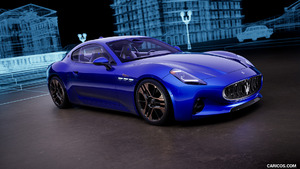2020 Mazda CX-30
Making its world debut at the 2019 Geneva Motor Show, the new Mazda CX-30 is the second model in the company's next-generation line-up. The compact SUV encapsulates the Mazda ownership experience, combining uniquely elegant Kodo styling with human-centric interior design and Jinba Ittai driving pleasure of unprecedented quality. 4,395 mm long, 1,795 mm wide, 1,540 mm high and with a 2,655 mm wheelbase, the Mazda CX-30 enters a new market segment for Mazda. Positioned between the CX-3 and the long-established and popular CX-5, it fulfils the requirements of customers who wish to combine the compact, urban-friendly dimensions of the former with the space and practicality of the latter.
The new Mazda CX-30 showcases a more mature Kodo design language which retains vitality but now targets greater styling prestige through the elegance and purity of a minimalist aesthetic inspired by the purest traditions of Japanese art and the beauty of space between objects .
The human-centric interior design combines a snug, focused driver's cockpit area with a clean, airy and open cabin space for passengers. Newly developed technologies such as 8-speaker Mazda or 12-speaker Bose® audio systems have been carefully integrated with premium materials and painstaking fit and finish to create an interior ambience of high quality and genuine refinement.
The new compact SUV features Mazda's new-generation Skyactiv-Vehicle Architecture, which harnesses people's inherent balance ability. In conjunction with smart technologies such as an evolved i-Activ all-wheel-drive (AWD) system which works in harmony with G-Vectoring Control (GVC) to control torque distribution between the front and rear wheels, this promotes an even more engaging Jinba Ittai driving experience.
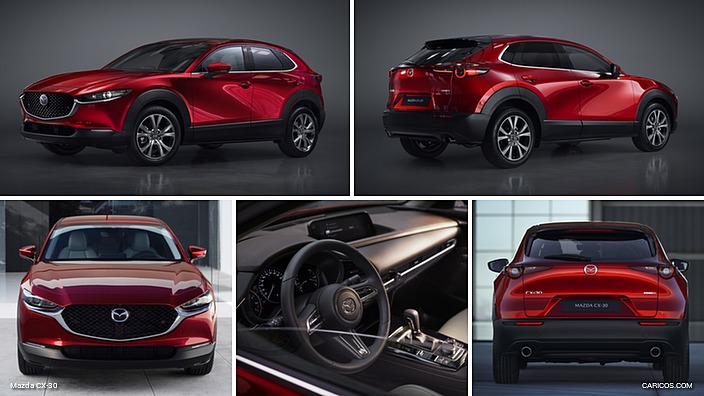 2020 Mazda CX-30
2020 Mazda CX-30
The powertrain line-up showcases the latest Skyactiv engines, including the company's revolutionary Spark Plug Controlled Compression Ignition (SPCCI) technology, which adopts a unique combustion method to combine the free-revving performance of a petrol engine with the superior response of a diesel.
Lastly, the Mazda CX-30’s comprehensive suite of i-Activsense active safety features now includes a newly added Driver Monitoring system, equipping the compact SUV with a further evolved capacity to provide all occupants with a safe, secure and enjoyable driving experience.
DESIGN
Since its introduction in 2010, Mazda’s Kodo – Soul of Motion design has been a driving force in enhancing the brand’s global value, and Mazda has now made this philosophy deeper and more sophisticated to raise car design to the level of fine art.
The goal for this evolution of Kodo design is to express a new form of elegance inspired by and rooted in traditional Japanese aesthetics. The Mazda Vision Coupe concept model introduced in 2017 embodied this design language through finely honed, minimalist styling: its elegantly restrained body form generated a delicate play of light and reflections that change over time to create styling with a natural, dynamic feel.
The new Mazda CX-30 is the second production model to adopt this latest evolution of the Kodo design philosophy. The honing every element according to the ‘less is more’ principle has created unprecedentedly clean, beautiful surfaces and brought an entirely original form to the compact crossover SUV segment.
Informed by the ‘Sleek and Bold’ design concept, the exterior styling exudes supple, flowing beauty and the toughness of an SUV. On board, the highly refined, premium quality interior combines a comfortably snug, highly focused driver's cockpit with an airy, spacious cabin atmosphere, enabling all occupants to enjoy a feeling of connection in a relaxed, comfortable environment.
Painstaking attention has been paid to every detail, from choice of materials to improved fit and finish, to create a genuinely refined, premium quality interior space.
EXTERIOR DESIGN
- With ‘Sleek and Bold’ as its design concept, the Mazda CX-30’s styling simultaneously realizes two contradictory elements: the flowing beauty of a coupe and the bold toughness of an SUV.
- The lower body features arresting black cladding to create the sleekly flowing proportions of a coupe. At the same time, the cladding gives an impression of stability and power appropriate to an SUV.
- The styling is derived from a new design language ‘Charge and Release', which stems from the brushwork used in Japanese calligraphy. It integrates the three key tenets of the evolved Kodo design language - Yohaku, the beauty of empty space; Sori, curves with poise and balance; and Utsuroi, the play of light and shade.
- Sori is clearly embodied in the arc of the shoulder running from the front fender to the rear wheel, giving a sense of speed and vitality. Utsuroi may be seen in the body surfaces beneath the shoulder line, which reflect the surroundings in an S shape that changes as the car moves. These expressions of body form finally come together in a single undulation at the rear where they diffuse.
- By eschewing character lines in favour of the movement of surfaces, the Mazda CX-30 achieves styling with both the beauty of a work of art and a powerful sense of dynamism.
- The rear fenders stand proud from the inward-tapering rear cabin and the tailgate has a correspondingly narrowed arch shape. In combination, this creates a sensuously powerful rear form with the wide, dynamic stance of a sports car.
- The front styling has an elegant, yet bold personality. Mazda’s signature wing is given a sharper and deeper form that combines with the solid, sculpted contours of the front bumper to achieve a powerful suggestion of forward motion. The size and pattern of the radiator grille’s triangular motif are tightly controlled to show rich variations according to the viewing angle and variations in light.
- The headlamps and rear combination lamps are both elegant and functional, featuring an LED array that emphasizes the lamps’ elaborate cylindrical shape. The LED turn signals have a new, distinctive light signature that starts at full power and then fades in sequential pulses.
- Nine body colours are available, including the Mazda-unique colours Soul Red Crystal, Machine Grey, and Polymetal Grey.
INTERIOR DESIGN
- The design of the Mazda CX-30’s cabin is based on Mazda’s human-centred design philosophy, and traditional Japanese architecture with its use of Ma, or empty space.
- In accordance with the ‘Sleek and Bold’ overall design concept, the Mazda CX-30’s interior achieves both flowing elegance and beauty, allied with the bold, do-everything attitude of an SUV.
- Great attention has been paid to every detail, from choice of materials to improved fit and finish, to create a genuinely refined, top-quality interior space.
- The basic structure combines a snug and condensed cockpit area for the driver, and a clean, airy open space around the front passenger.
- The cockpit is symmetrical and firmly centred on the driver, with all three meters in the meter cluster and the centre display correctly angled towards the driving position.
- The upper area of the dashboard features a secondary, wing-shaped hood. Running horizontally from the top of the meter hood into the door trim on the passenger side and finished with high quality stitching, it generates an airy atmosphere, giving the cockpit a more expansive feel.
- A wide floor console groups the gear lever, cup holders and commander control forward in a ‘control area’ close to the driver for convenient, ergonomically excellent operation.
- The gear lever panel features an evolved version of Mazda’s ‘two-layer moulding’ technology first introduced in the All-New Mazda3. Light striking the deep smoke-grey panel reveals a metallic pattern engraved in the base layer to reinforce the fine detailing and premium quality of the interior.
- The new Mazda CX-30 comes with a choice of two distinctive interior colour schemes - either chic, mature Dark Brown or tasteful, modern Dark Blue accents.
- The Dark Brown scheme is available in Black or Pure White genuine leather. Perforations in the Black leather upholstery reveal a refined, brown interior liner. The Dark Blue scheme features fabric or leatherette upholstery, both offered in Greige or Black.
PACKAGING
- Mazda’s human-centred development has resulted in a notably well packaged and versatile interior. The new compact crossover SUV features a cabin that accommodates all passengers in relaxed comfort even on the longest drives, while the luggage space offers the effortless practicality and high load capacity to satisfy all lifestyle requirements.
- The driver’s environment benefits from the application of the most advanced knowledge and technologies during the development of the driving position and Human-Machine Interface (HMI).
EXTERIOR AND INTERIOR DIMENSIONS
- The Mazda CX-30 compact SUV enters a new market segment for Mazda. Positioned between the CX-3 and the long-established and popular CX-5, it fulfils the requirements of customers who wish to combine the compact, urban-friendly dimensions of the former with the space and practicality of the latter.
- Though sufficiently compact to offer excellent urban manoeuvrability, the new Mazda CX-30 combines easy access with a spacious, versatile cabin and large luggage compartment.
- The wide spacing of the front seats allows for a wide floor console with a refined layout and a large centre armrest.
- Equally spacious rear seat separation facilitates wide rear centre armrest and door armrests, allowing rear seat occupants to enjoy a comfortable, relaxed seating posture.
- The generous distance between front and rear seat hip points and a low rear seat hip-point height create ample knee and headroom, enabling taller passengers to occupy the rear seats in comfort.
- The wide spacing of the seats, both fore-aft and laterally, makes it easier for people in the front to turn and face people in the rear. At the same time, rear occupants can see front occupants’ faces in profile with minimal effort. The result is an interior space that enhances communication between all cabin occupants.
| Mazda CX-30 | |
| Overall length | 4,395 mm |
| Overall width | 1,795 mm |
| Overall height at roof panel | 1,540 mm |
| Wheelbase | 2,655 mm |
| Front overhang | 915 mm |
| Rear overhang | 825 mm |
LUGGAGE SPACE
- Luggage capacity is a capacious 430L, enough to simultaneously accommodate a large, global-standard baby buggy and a carry-on bag. Lift gate opening width is 1,020mm, while the height of the loading lip is just 731mm, for easy loading and unloading of heavy or bulky cargo.
- Through the use of non-woven fabric on the side trim and a simplified wall structure, the luggage compartment has a clean, refined appearance.
- An optional power-operated tailgate features one-touch opening and closing. The gears and housing of its damper unit are made of resin for quieter operation.
ENTRY AND EXIT
- Despite an SUV-appropriate ground clearance, a low seat hip-point height makes for easy entry and exit from the Mazda CX-30.
- In addition to the generous distance between the front and rear seats and the low rear floor height, the shapes of seat cushions and B-pillars have been optimized to accommodate the movement of passengers during entry and exit. These measures enable even heavily built rear passengers to get in and out in a smooth fashion.
DRIVING POSITION
- The telescopic steering now offers a total travel of 70mm to deliver precise control over the driving position. In addition, front seat cushion tilt adjustment is fitted as standard to help prevent the occupant’s thighs floating above the cushion (seat angle too low) or placing undue pressure on the thighs (seat angle too high).
- The high, forward positioning of the gear shift lever on both automatic and manual transmission versions makes the moving of the driver's hand from the steering wheel to the shift lever easier and faster.
- This positioning of the commander control and cup holder, and the long centre armrest further enhance operating stability, ease and comfort.
HUMAN-MACHINE INTERFACE (HMI)
- The Active Driving Display, meters and centre display have all been designed to present information in a clear, simple fashion, while the fonts used have been unified to create a pleasing and consistent look.
- A combination of analogue dials and digital displays offers the user the right level of information in a quick, easily read format without distracting the driver.
- The new Mazda CX-30 adopts an 8.8-inch wide-screen centre display. Offering simplified operation that requires only the use of the commander control, it also features a new, intuitive guidance system that makes the commander control easier to operate.
- The MZD Connect system in the Mazda CX-30 supports Apple CarPlay® and Android Auto™ through a simple USB connection to Mazda MZD Connect’s Human-Machine Interface (HMI).
FIELD OF VIEW
- The driver’s seating position is set high to provide a clear field of view and let the driver focus on the road ahead.
- The thickness and shape of the A-pillar have been optimised to minimise its obstruction angle and associated blind spots. Every detail of the pillar shape has been carefully considered to significantly reduce blind spots ahead of the car, providing the driver with a continuous view of pedestrians or potential obstacles whilst maintaining a natural driving posture.
- The narrow C-pillar provides optimum rearward visibility through the quarter window, for the clear sight of other vehicles or objects to the rear when changing lanes or entering a parking lot.
AUDIO SYSTEM
- Mazda has carried out comprehensive new studies into how sounds are transmitted through a car’s cabin. This led to locating the bass speakers in the corners where low frequency sound is better reproduced, resulting in a more clearly audible lower register.
- Midrange and high-frequency speakers have been positioned on the left and right sail garnish and upper sections of the door trim where the sound is transmitted directly towards the occupant’s ears, un-muddied by reflected sounds. This more powerfully and naturally locates the sound’s origin, enhancing both depth and clarity.
- The standard audio system features a 3-way, 8-speaker configuration with 3 litre woofers mounted at the sides of the cowl, 2.5cm tweeters on the left and right sail garnishes and 8cm mid-range units on the upper section of the front and rear door trim.
- The 12-speaker Bose® system adds an 8cm centre speaker, a pair of rear satellite speakers and a subwoofer. The system is custom tuned to provide more powerful bass and the enhanced audio quality expected of the Bose® brand.
DRIVING DYNAMICS
The ultimate in Jinba Ittai - the feeling that the vehicle is an extension of the driver’s body, precisely controlled without conscious thought - remains Mazda’s goal with the development of every new model. And the new Mazda CX-30 sees Jinba Ittai further evolved to deliver even greater and more effortless driving pleasure. To achieve this, Mazda has introduced Skyactiv-Vehicle Architecture, a new-generation of human-centric structural technology which harnesses people's inherent balance ability, affording them both greater on-board comfort and more involvement with the driving experience.
The latest Skyactiv engine line-up combines exhilarating performance with enhanced fuel economy and environmental friendliness, while the precisely coordinated control of i-Activ AWD and GVC Plus provides even more pleasant, comfortable and confidence-inspiring driving.
Furthermore, the quality of the cabin’s quietness has been improved through painstakingly developed NVH performance based on thoroughgoing studies of human sensory characteristics.
POWERTRAINS
- The New Mazda CX-30 powertrain line-up showcases the latest Skyactiv Euro 6d-TEMP diesel and petrol engines, including the company's revolutionary Spark Plug Controlled Compression Ignition (SPCCI) technology. SPCCI adopts a unique combustion method to combine the free-revving performance of a gasoline engine with the superior response of a diesel.
- All Skyactiv petrol engines are equipped with Mazda's new M-Hybrid system, featuring electric drive technology. Compact and efficient, this mild hybrid system features an electric motor that assists the engine and a 24V 600kJ lithium-ion battery mounted between the wheels.
- The M-Hybrid system not only enhances the Mazda CX-30's environmental performance, but also ensures better drivability. When the car is starting accelerating or coming to a stop, transitions feel smooth and natural. By substituting engine torque for motor torque, the hybrid system can achieve the same acceleration as a petrol engine alone, while using less fuel. The driver enjoys all the benefits of mild hybrid technology without any sacrifice in driving pleasure.
I-ACTIV ALL-WHEEL-DRIVE (AWD)
- Mazda’s evolved i-Activ AWD adds ‘four-wheel vertical load’ detection and works in harmony with GVC to control torque distribution between the front and rear wheels, enhancing traction and grip regardless of the driving scenario. It also significantly reduces overall mechanical loss and contributes to improved fuel economy.
- Through a newly developed control system and new technologies to reduce friction, i-Activ AWD delivers a refined and stable ride in any situation and real-world fuel economy almost as good as a front-wheel drive vehicle.
- To enhance real-world fuel economy, the new system adopts a rubber damper inside the power take-off unit, which greatly reduces fluctuations in input torque sent to the rear-wheel drive unit.
- A new design for the rear differential stores oil in the upper part and supplies just the necessary amount where and when required. In combination with the adoption of ball bearings and the use of low-viscosity oil, this design further reduces mechanical loss.
- A new setting applies a slight difference in the deceleration ratio between the power take-off and rear differential. Not only does this maintain the same response in torque distribution, but it also increases the precision of the AWD-control unit, with a significant reduction in overall mechanical loss.
- Regardless of the road surface conditions i-Activ AWD offers extra grip at all times, contributing to smooth accelerating, braking or cornering. The balance of grip between front and rear tires is constantly controlled to maintain smooth, stable driving.
- Furthermore, Mazda’s advanced i-Activ AWD works in harmony with GVC to control the distribution of torque between front and rear wheels in accordance with the driver’s steering and acceleration inputs, and the grip available to all wheels, in order to deliver a faithful response with extra vehicle control to spare, regardless of the driving scenario.
G-VECTORING CONTROL PLUS (GVC PLUS)
- Building on the smooth and efficient vehicle behaviour delivered by GVC, GVC Plus adds direct yaw moment control via the brakes.
- When cornering, GVC Plus lightly applies brake force to the outer wheels as the steering wheel is returned to the centre position. This provides a recovery moment that restores the vehicle to straight-line running and achieves greater stability.
- This enables the car to better handle emergency avoidance manoeuvres and offers more confidence-inspiring controllability in various situations, including high-speed lane changes and driving on slippery roads.
NEW-GENERATION STRUCTURAL TECHNOLOGIES: SKYACTIV-VEHICLE ARCHITECTURE
- The seat structure is designed to maintain the natural S-shaped curve of the spine. The seat cushion and lower seatback support the thighs, lower pelvis and upper pelvis to keep the pelvis in an upright position. Meanwhile, the upper seatback supports the rib cage’s centre of gravity. This structure enables the driver to stabilize his or her head in a natural fashion by shifting the pelvis and spine to maintain balance without any conscious effort.
- The bodyshell further evolves Mazda’s straight framework and continuous ring structure concept. New front-to-back connections complement the existing vertical and lateral connections of the previous bodyshell to form multi-directional ring structures. This increases rigidity while reducing lag in the transmission of energy, which helps maximise the function of the dampers and tyres. By concentrating energy input from the road surface in specifically chosen locations and adopting a damping structure that helps absorb it, vibration that causes noise is reduced without increasing vehicle weight.
- The suspension system - MacPherson struts at the front and a torsion beam set-up at the rear - has been updated based on the concept of smoothing the transmission of forces to the sprung mass over time. A new spherical shape adopted for the internal structure of the bushings combines with new suspension geometry to realize lag-free transmission and linear action.
EXCELLENT NVH
- As a result of Mazda’s human research studies, NVH development focused on three characteristics of sound that directly impact cabin occupants: volume, changes in pitch and tone over time, and the direction from which sounds originate.
- The suppression of noise generation and reducing its volume, while also controlling the fluctuations and directionality of sounds, are all aimed at going beyond simply a ‘quiet’ cabin environment to creating a ‘high-quality quietness’ that is satisfying to all cabin occupants.
- To improve the basic insulation qualities key to reducing NVH, the Mazda CX-30 adopts a 'two-wall' structure with space between the body and the carpeting. Considering the carpet and the body panel as two separate walls, and then designing them to match the characteristics of the carpet fibres improves sound insulation without increasing weight. The number of holes in the carpeting was also reduced wherever possible to significantly enhance sound insulation.
- Measures to deal with road noise focused on minimizing noise and vibration, and on controlling noise generated by changes in the road surface so it reaches occupants’ ears in a linear fashion.
- Sound-absorption added to the headliner and floor mats effectively suppresses high-frequency noise, while tyres with optimized vertical yield and increased rigidity at possible entry points help prevent the transmission of unwanted vibrations to the cabin. Lag-free transmission of permissible sounds and vibrations helps create a more reassuring and comfortable cabin environment.
SAFETY
The Mazda Proactive Safety philosophy guides all the company’s research and development efforts in safety performance, driving the evolution of every area from basic safety technologies including the driving position, through passive safety technologies to advanced i-Activsense features.
The new Mazda CX-30 is equipped with numerous safety technologies born from these research endeavours. i-Activsense active safety features now include a Driver Monitoring system that observes the driver’s condition, while further evolved technologies to help prevent accidents through advanced brake control enhance the all-direction sensing capability which Mazda is pursuing.
Passive safety development focused on studies of human characteristics and details of actual accidents, contributing to greatly enhanced collision safety and pedestrian protection performance.
As a result, the Mazda CX-30 has a further evolved capacity to provide all occupants with a safe, secure and enjoyable driving experience, helping to realize an accident-free automotive society.
ACTIVE SAFETY: I-ACTIVSENSE
- The Mazda CX-30 is available with Mazda’s Driver Monitoring system. The system uses both an infrared camera and infrared LED to observe the driver’s condition while driving by monitoring how wide the driver’s eyes are open at any given time, the number of times he or she blinks, and also the angle of the mouth and face in order to determine the level of drowsiness or fatigue. It also monitors the driver’s line of sight and eye movement to determine when the driver is being inattentive. If the system judges that the situation has become dangerous, it sounds an alert to make the driver aware and works in conjunction with the Smart Brake Support (SBS) system to shorten the time required for the brake warning to sound.
- Front Cross Traffic Alert (FCTA) is available on the Mazda CX-30. When pulling forward, the system uses front side radar to detect other vehicles approaching from blind spots and alert the driver to their presence. This helps prevent a common cause of accidents when cars enter a T-junction with a partially obscured view.
- Mazda’s Cruising and Traffic Support (CTS) system is also available. CTS contributes to lower driver fatigue by assisting with accelerator, brake pedal and steering operations when stuck in traffic. It also supports a safer, more reassuring and more comfortable driving experience in conditions that demand constant operation of the assisted functions.
PASSIVE SAFETY
- The new Mazda CX-30 benefits from a bodyshell of which 30% comprises high-strengh steel rated at 980MPa or higher, partially up to 1,310MPa. This combines with a perimeter beam, a B-pillar structure of both high strength and light weight, and rear side frames that deform in an accordion-style pattern to create a solid body that can withstand impact force and a frame structure that effectively absorbs energy.
- The new Mazda CX-30 introduces a driver's knee airbag as standard equipment worldwide. By suppressing forward motion of the driver’s body in the event of a collision, this new airbag helps lessen injuries to the driver’s legs, chest and abdomen.
- The hood adopts a new energy-absorbing inner structure designed to receive the impact of a pedestrian’s head in the initial moment of contact and then gradually dampen the force to more stably absorb impact energy.
- The front bumper is designed to support the thigh and shins if contact is made with a pedestrian’s legs, while softening the blow to the knee area. This reduces the degree of injury to the knees and ligaments due to bending and twisting.
Reference exhibit (European specification)
| Body type | Five-door station wagon |
| Seating capacity | 5 persons |
| Overall length x width x height | 4,395 mm × 1,795 mm × 1,540 mm |
| Wheelbase | 2,655 mm |
| Transmission | Mazda 6-speed automatic, Mazda 6-speed manual |
| Front suspension | MacPherson strut |
| Rear suspension | Torsion beam |
| Steering type | Rack-and-pinion |
| Brake (front/rear) | Vented discs/solid discs |
| Tires 215/65R16, 215/55R18 |

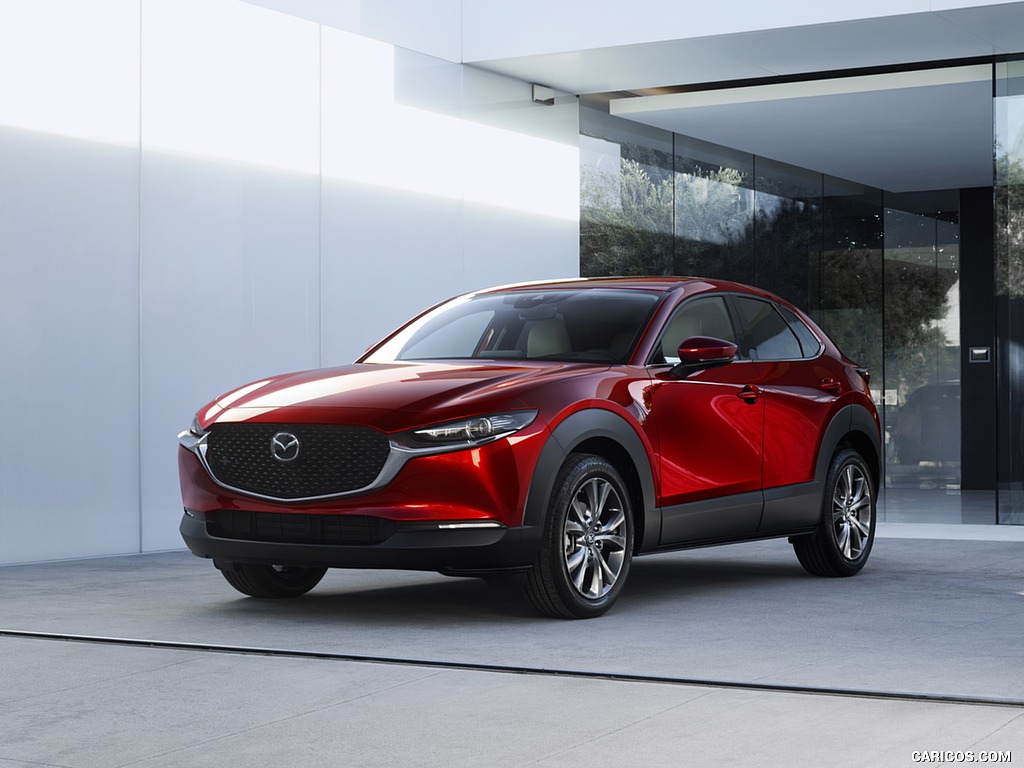 \n
\n
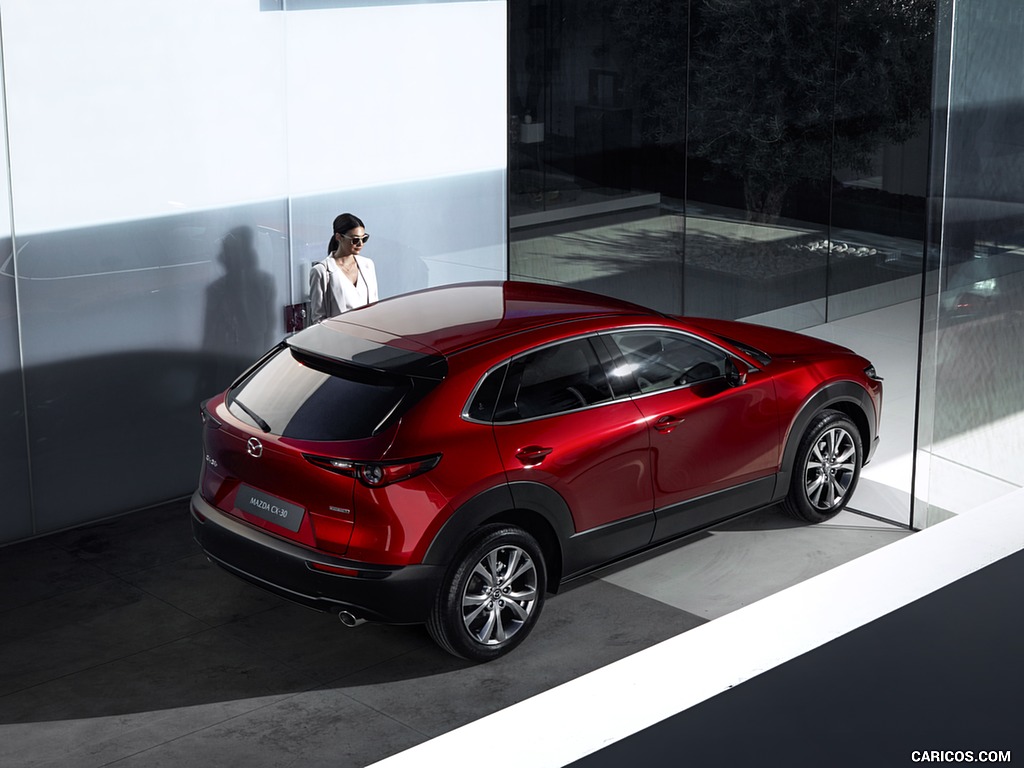 \n
\n
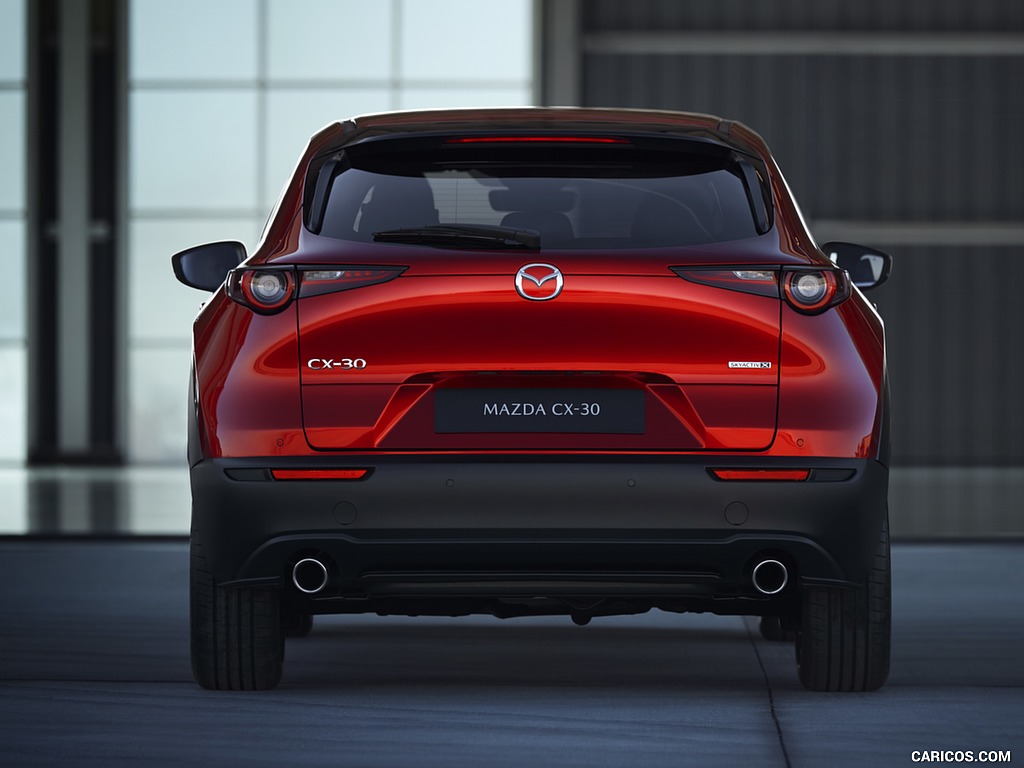 \n
\n
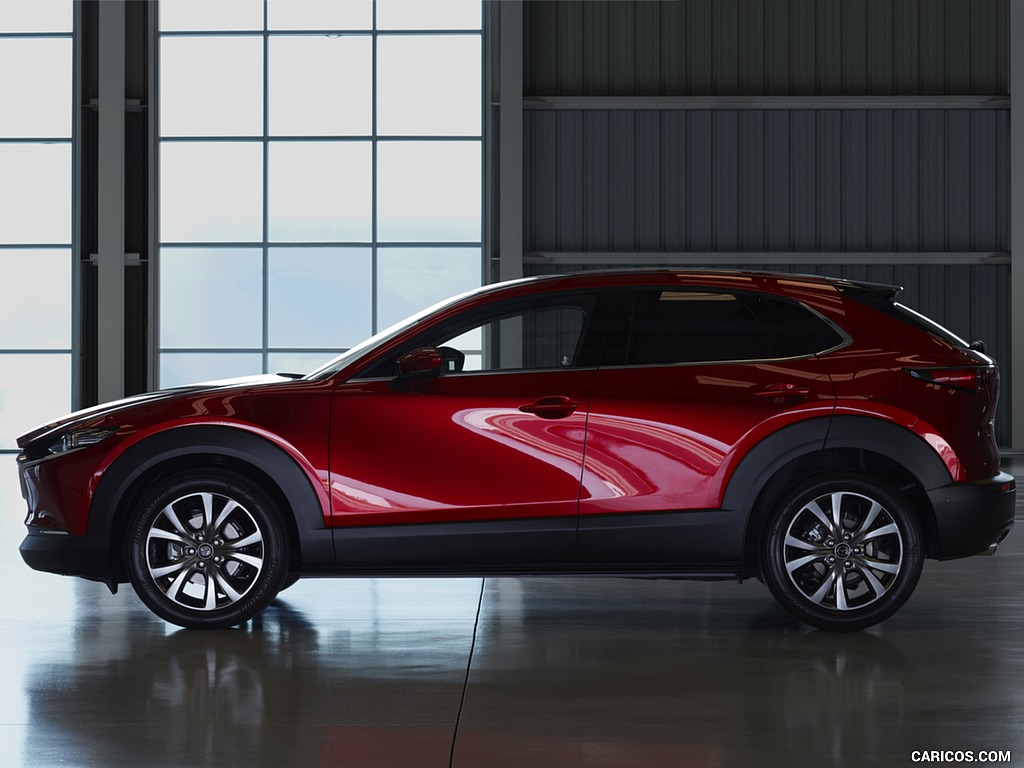 \n
\n
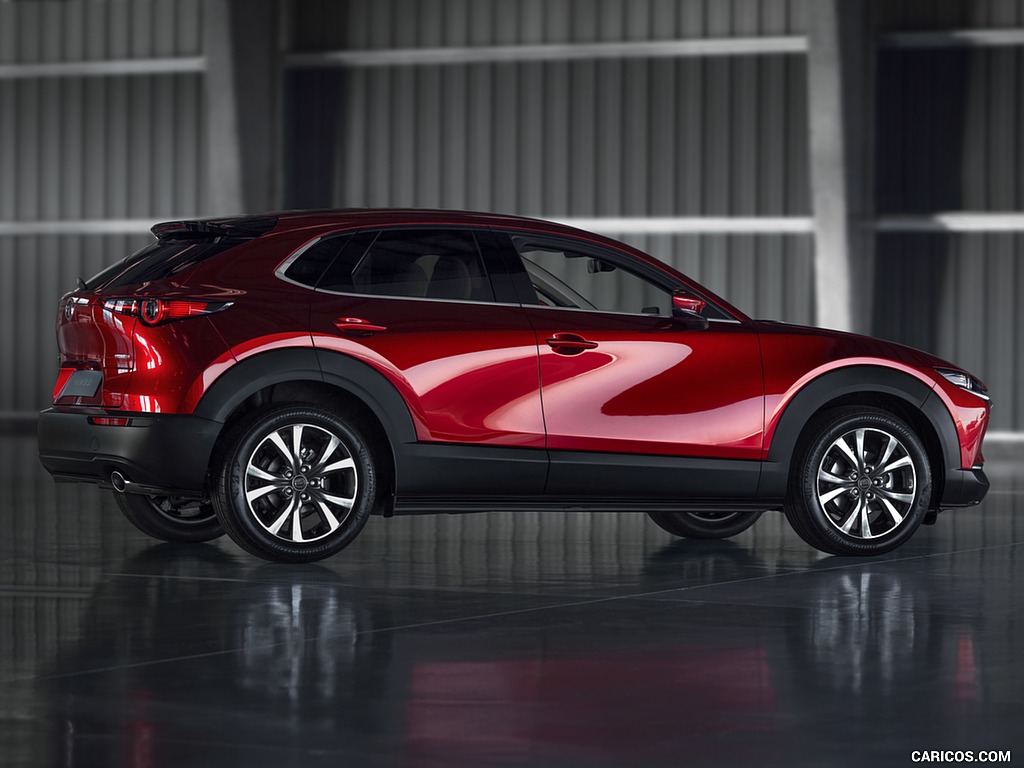 \n
\n
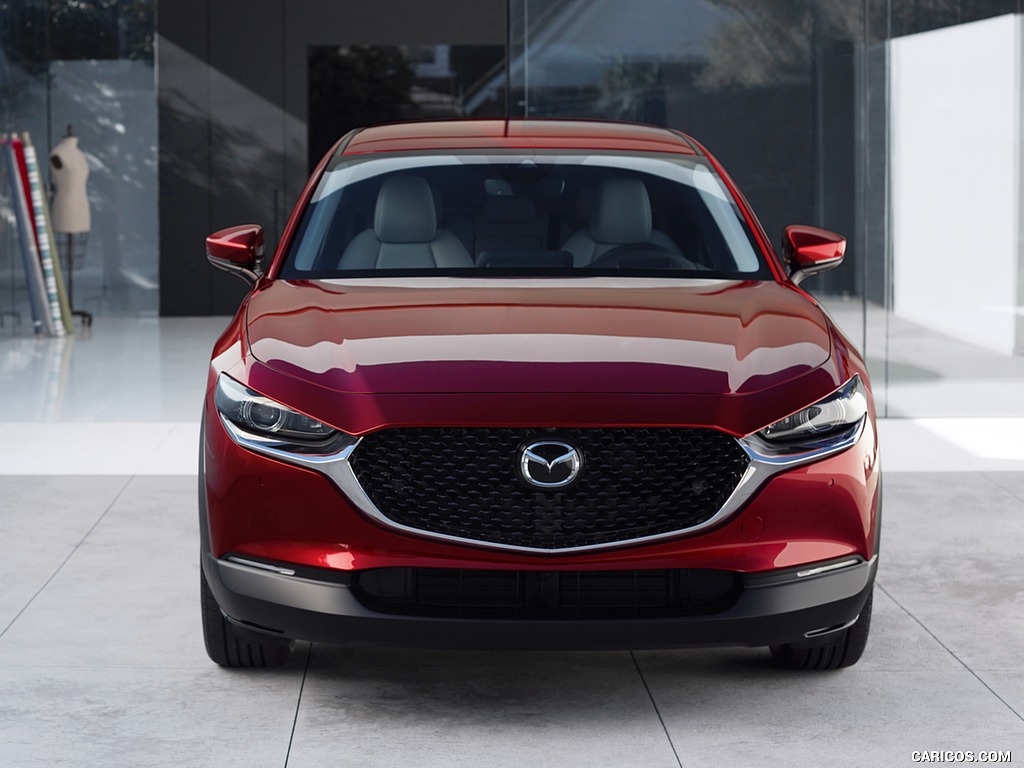 \n
\n
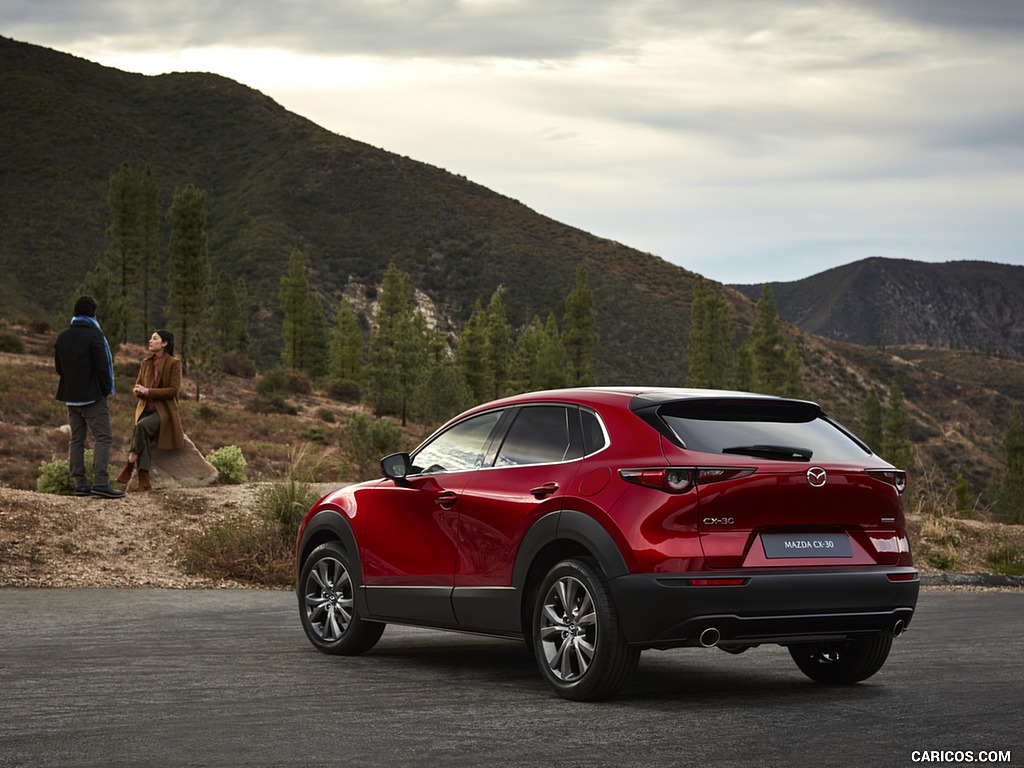 \n
\n
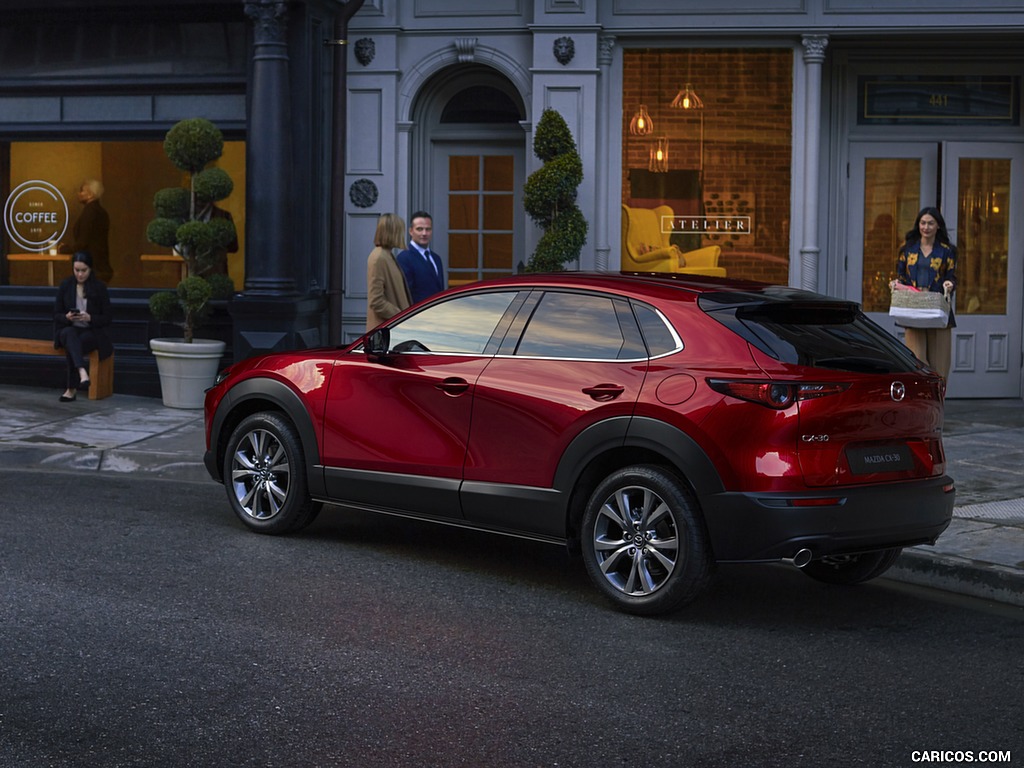 \n
\n
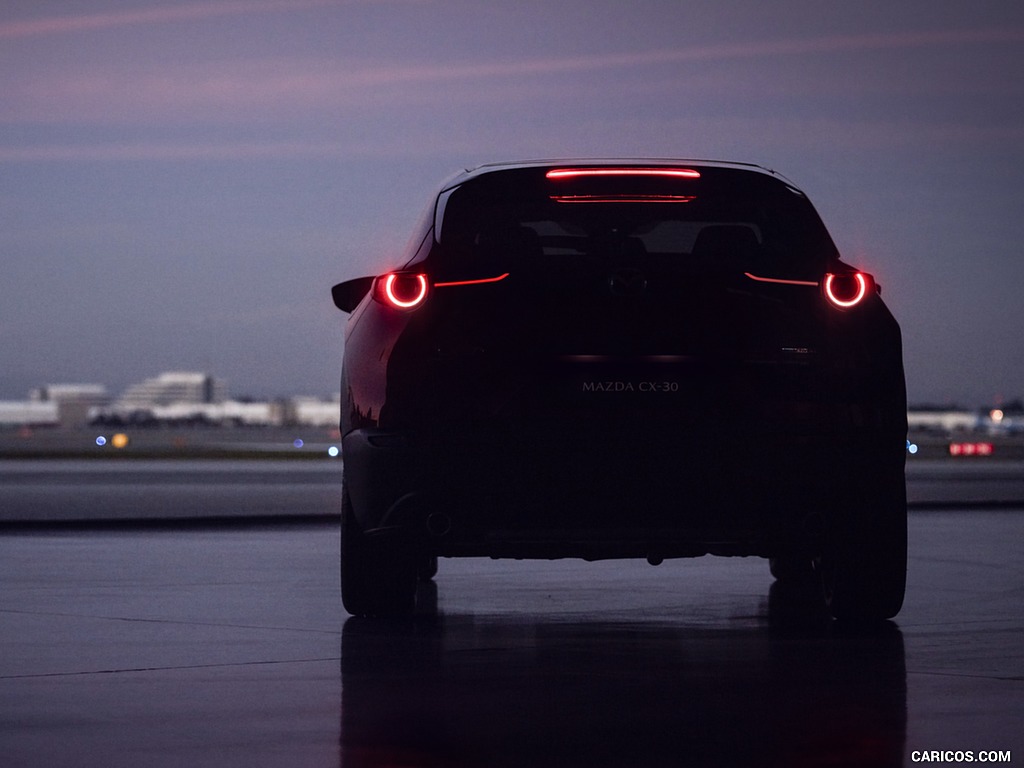 \n
\n
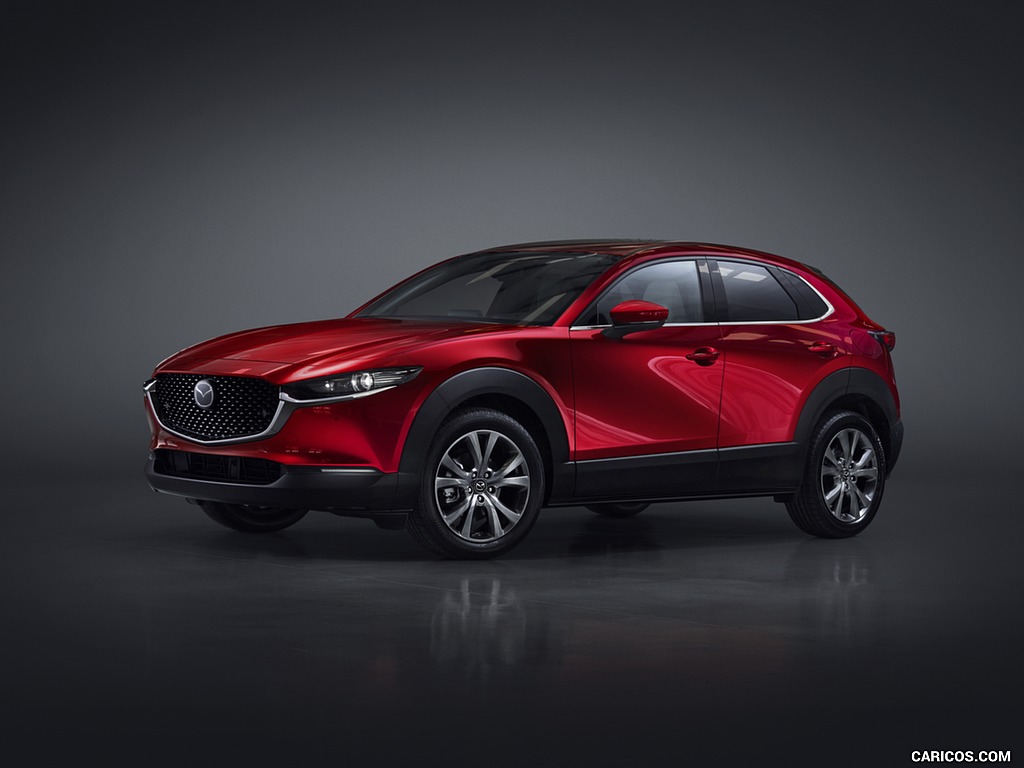 \n
\n
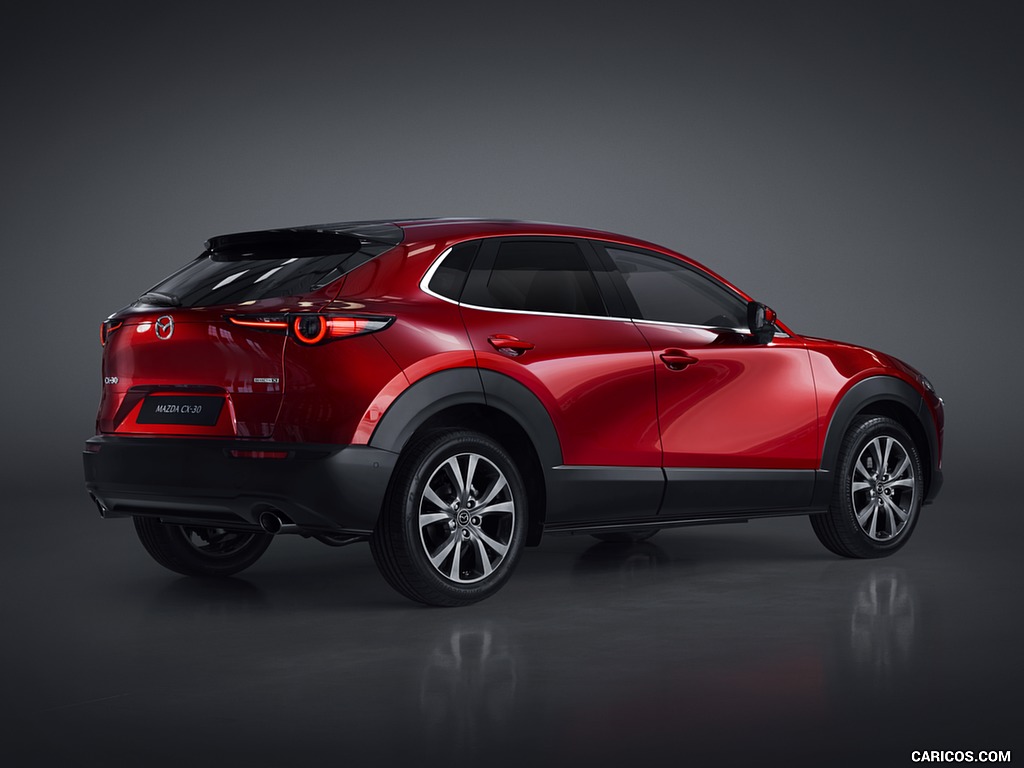 \n
\n
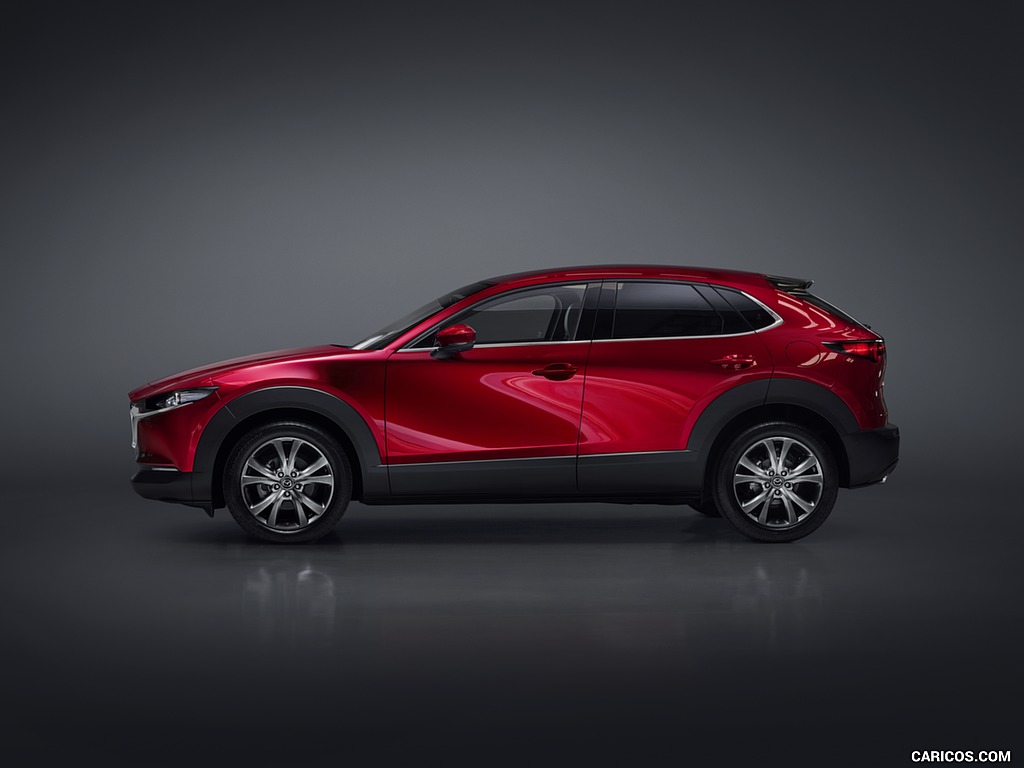 \n
\n
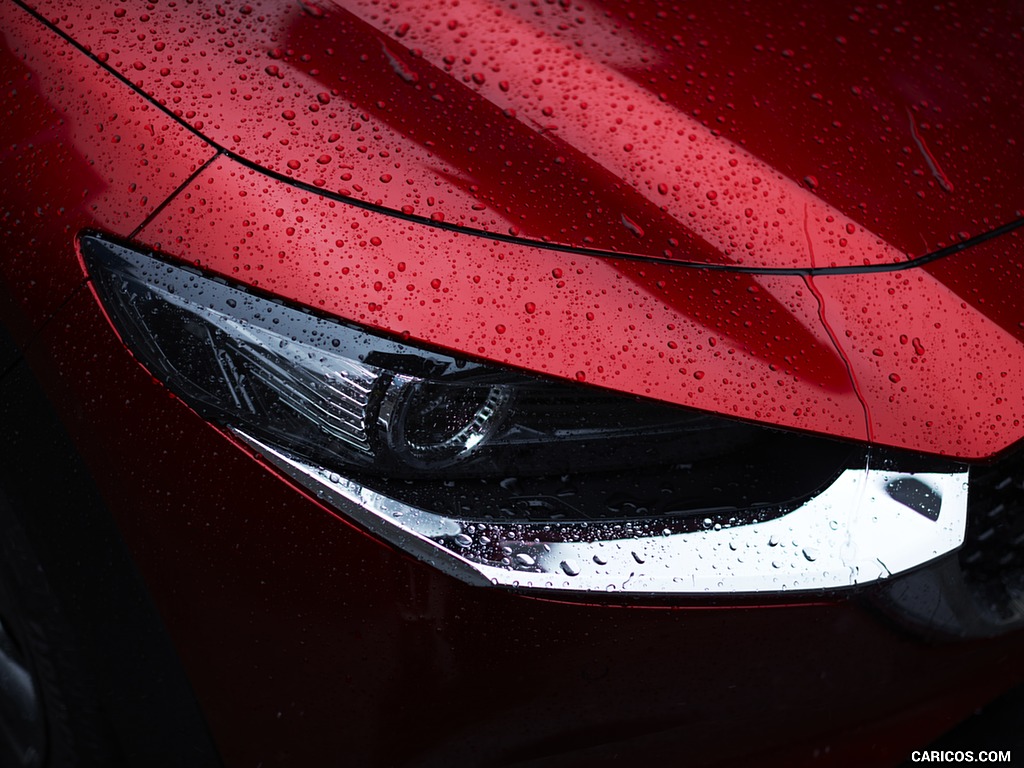 \n
\n
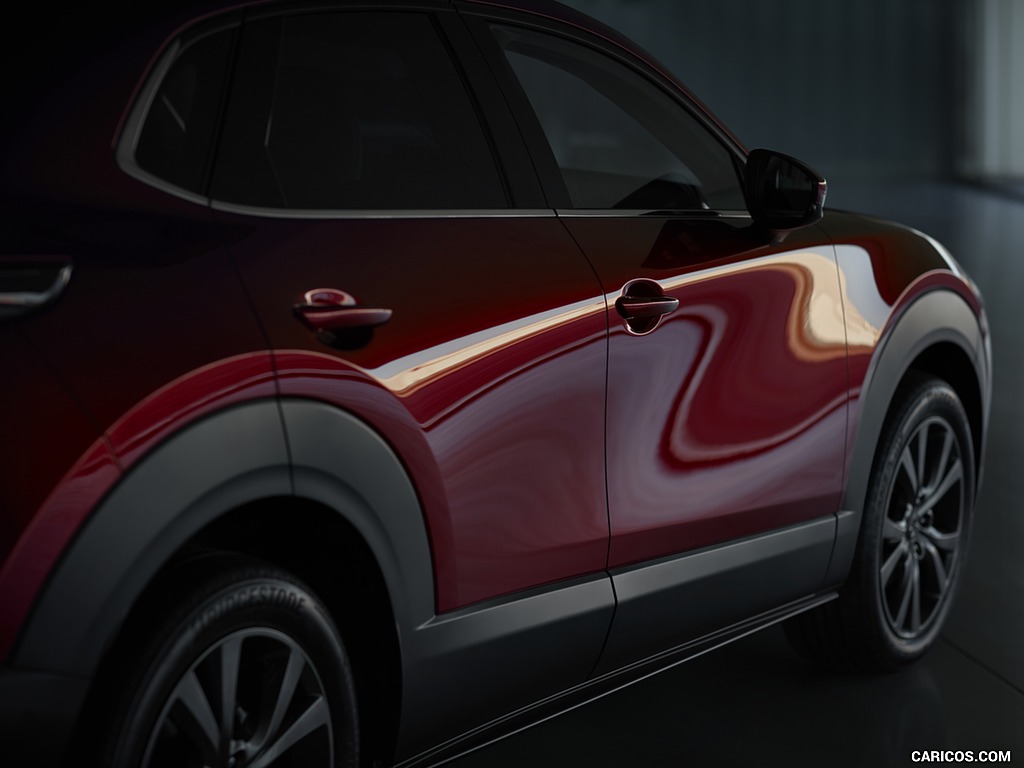 \n
\n
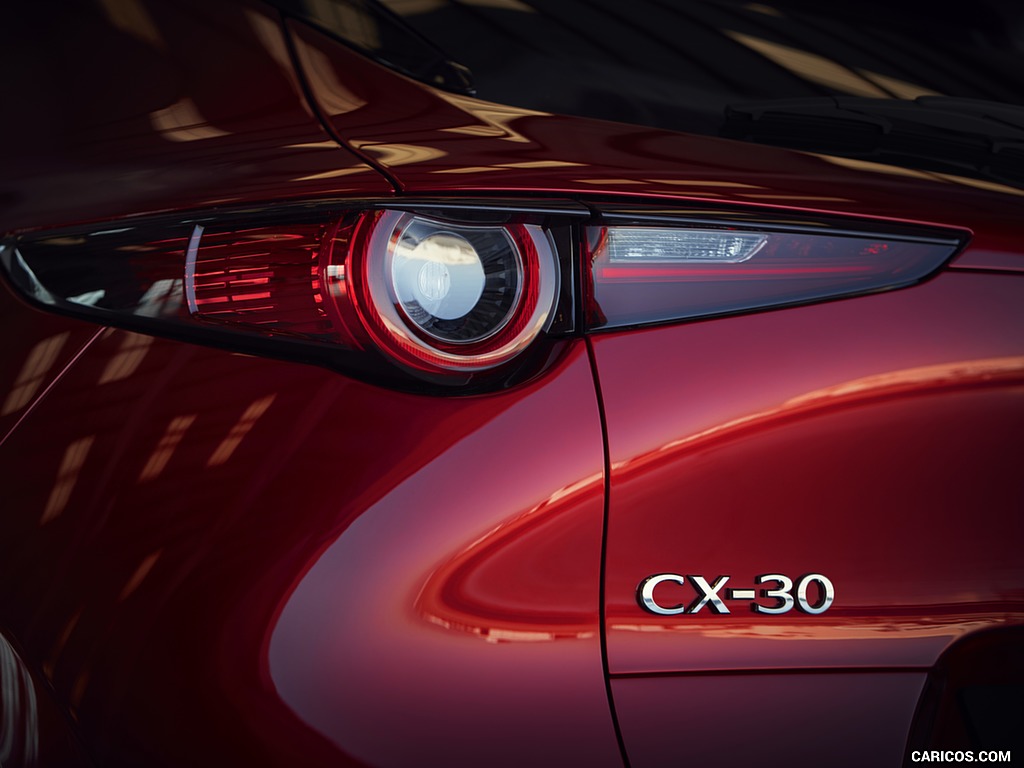 \n
\n
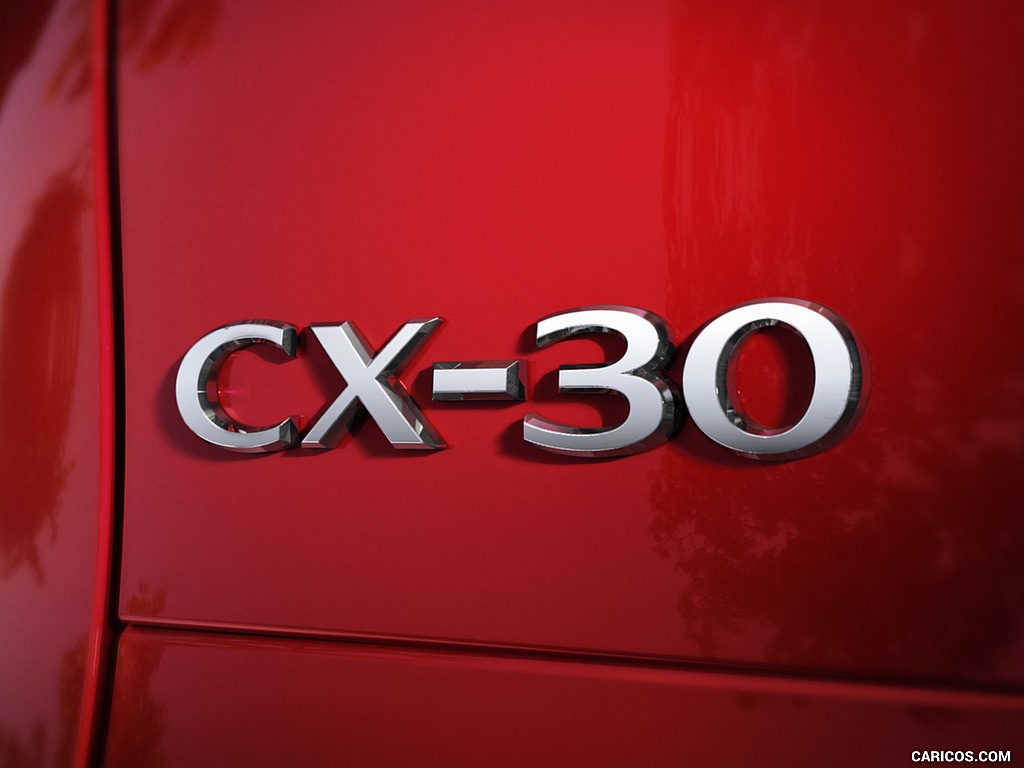 \n
\n
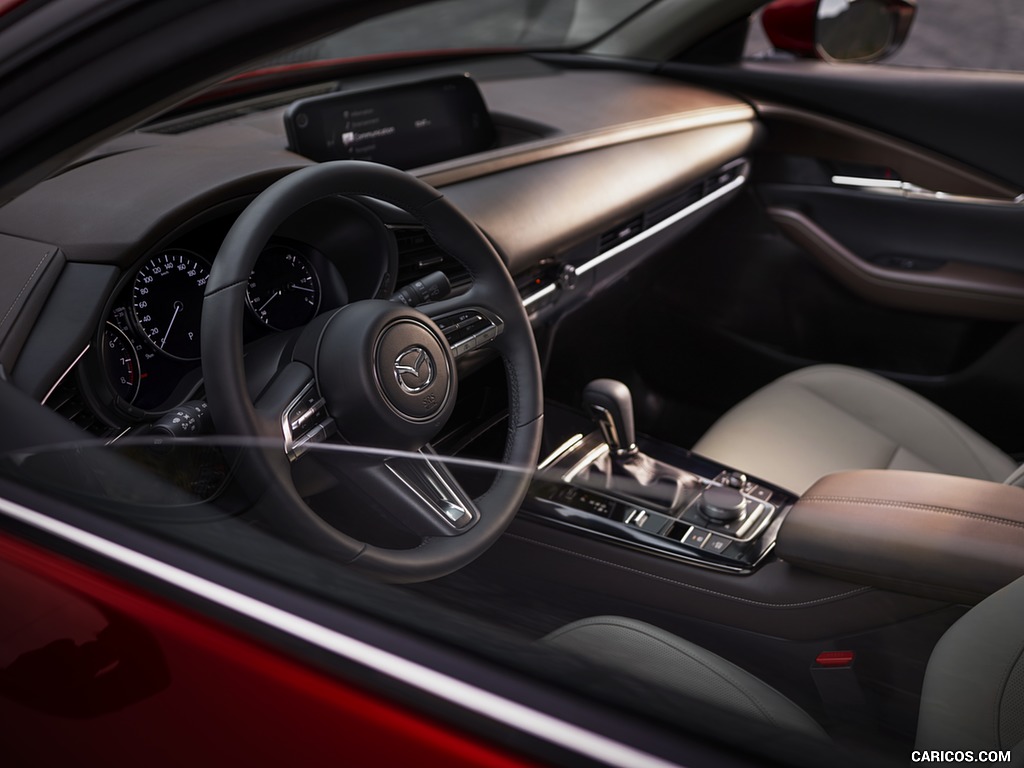 \n
\n
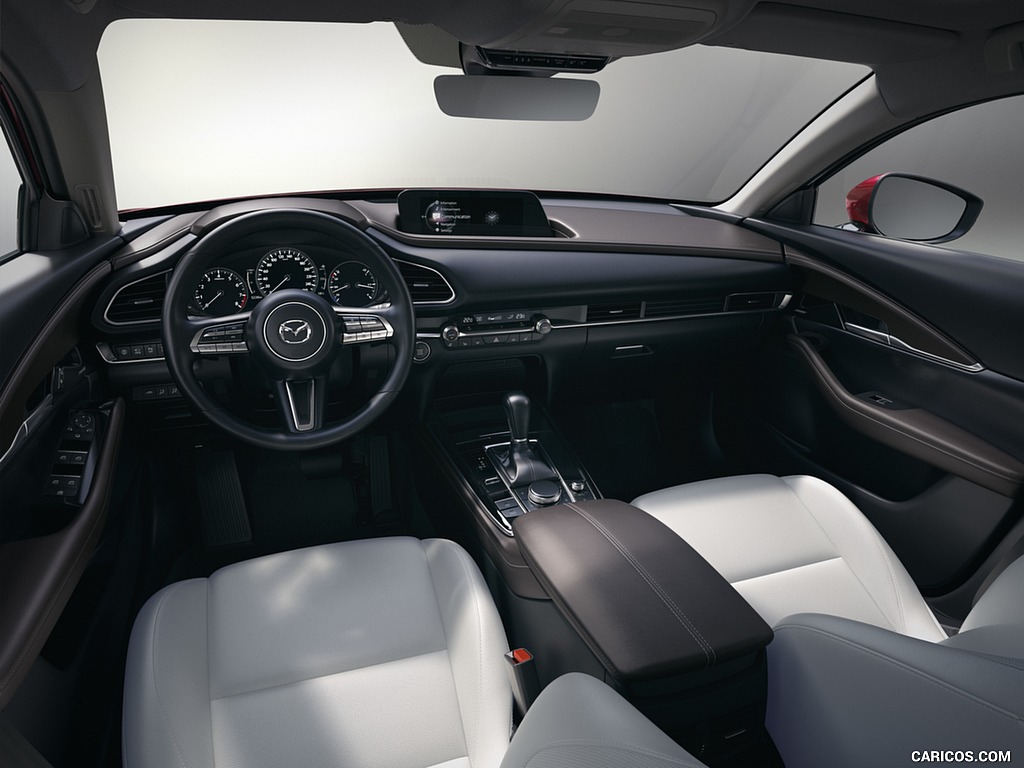 \n
\n
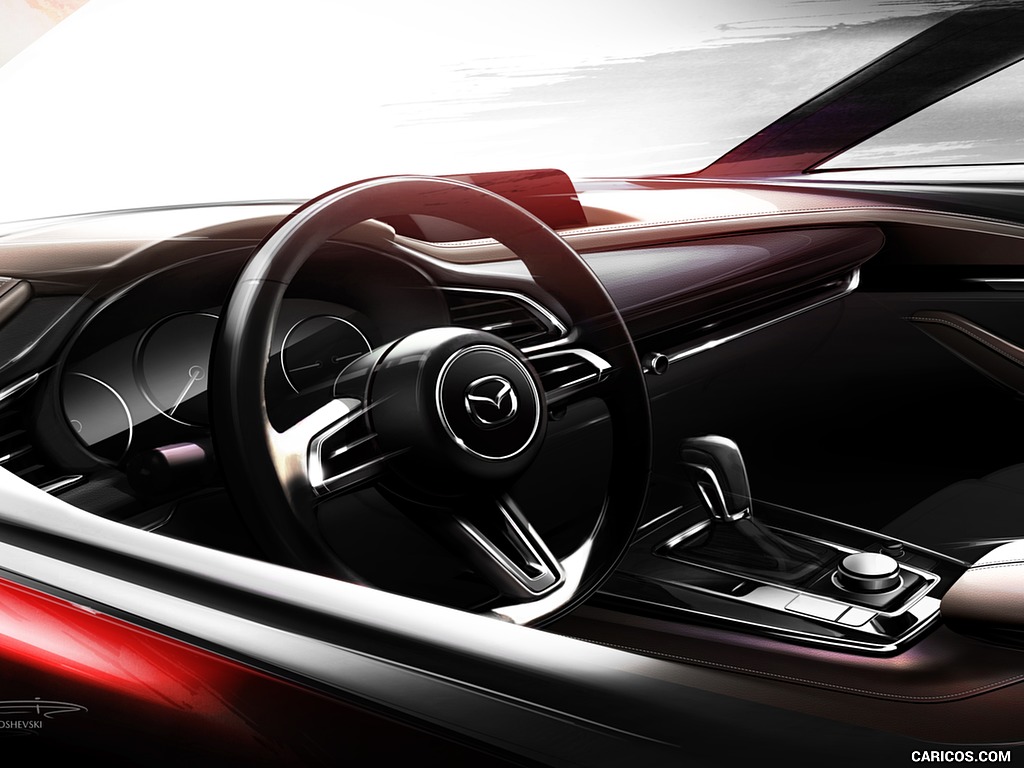 \n
\n
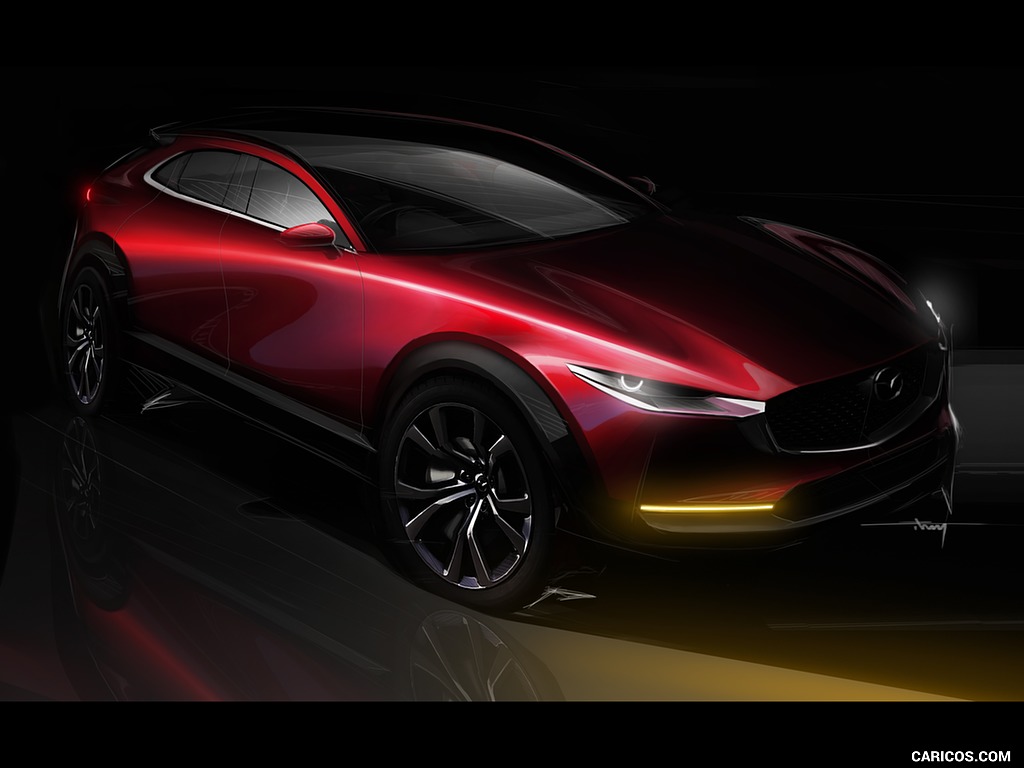 \n
\n---Front-191413-120x90.jpg)
---Front-191413-1024x768.jpg) \n
\n---Front-191414-120x90.jpg)
---Front-191414-1024x768.jpg) \n
\n---Front-191415-120x90.jpg)
---Front-191415-1024x768.jpg) \n
\n---Front-191416-120x90.jpg)
---Front-191416-1024x768.jpg) \n
\n---Front-191417-120x90.jpg)
---Front-191417-1024x768.jpg) \n
\n---Front-191418-120x90.jpg)
---Front-191418-1024x768.jpg) \n
\n---Front-191419-120x90.jpg)
---Front-191419-1024x768.jpg) \n
\n---Front-191420-120x90.jpg)
---Front-191420-1024x768.jpg) \n
\n---Front-191421-120x90.jpg)
---Front-191421-1024x768.jpg) \n
\n---Rear-191422-120x90.jpg)
---Rear-191422-1024x768.jpg) \n
\n---Rear-191423-120x90.jpg)
---Rear-191423-1024x768.jpg) \n
\n---Front-Three-Quarter-191424-120x90.jpg)
---Front-Three-Quarter-191424-1024x768.jpg) \n
\n---Rear-191425-120x90.jpg)
---Rear-191425-1024x768.jpg) \n
\n---Front-191426-120x90.jpg)
---Front-191426-1024x768.jpg) \n
\n---Rear-191427-120x90.jpg)
---Rear-191427-1024x768.jpg) \n
\n---Rear-191428-120x90.jpg)
---Rear-191428-1024x768.jpg) \n
\n---Rear-191429-120x90.jpg)
---Rear-191429-1024x768.jpg) \n
\n---Rear-191430-120x90.jpg)
---Rear-191430-1024x768.jpg) \n
\n---Front-191431-120x90.jpg)
---Front-191431-1024x768.jpg) \n
\n---Front-191432-120x90.jpg)
---Front-191432-1024x768.jpg) \n
\n---Rear-191433-120x90.jpg)
---Rear-191433-1024x768.jpg) \n
\n---Rear-191434-120x90.jpg)
---Rear-191434-1024x768.jpg) \n
\n---Rear-Three-Quarter-191435-120x90.jpg)
---Rear-Three-Quarter-191435-1024x768.jpg) \n
\n---Rear-191436-120x90.jpg)
---Rear-191436-1024x768.jpg) \n
\n---Rear-191437-120x90.jpg)
---Rear-191437-1024x768.jpg) \n
\n---Rear-191438-120x90.jpg)
---Rear-191438-1024x768.jpg) \n
\n---Rear-191439-120x90.jpg)
---Rear-191439-1024x768.jpg) \n
\n---Side-191440-120x90.jpg)
---Side-191440-1024x768.jpg) \n
\n---Side-191441-120x90.jpg)
---Side-191441-1024x768.jpg) \n
\n---Side-191442-120x90.jpg)
---Side-191442-1024x768.jpg) \n
\n---Front-191443-120x90.jpg)
---Front-191443-1024x768.jpg) \n
\n---Front-Three-Quarter-191444-120x90.jpg)
---Front-Three-Quarter-191444-1024x768.jpg) \n
\n---Front-Three-Quarter-191445-120x90.jpg)
---Front-Three-Quarter-191445-1024x768.jpg) \n
\n---Rear-Three-Quarter-191446-120x90.jpg)
---Rear-Three-Quarter-191446-1024x768.jpg) \n
\n---Front-Three-Quarter-191447-120x90.jpg)
---Front-Three-Quarter-191447-1024x768.jpg) \n
\n---Front-Three-Quarter-191448-120x90.jpg)
---Front-Three-Quarter-191448-1024x768.jpg) \n
\n---Front-Three-Quarter-191449-120x90.jpg)
---Front-Three-Quarter-191449-1024x768.jpg) \n
\n---Front-Three-Quarter-191450-120x90.jpg)
---Front-Three-Quarter-191450-1024x768.jpg) \n
\n---Side-191451-120x90.jpg)
---Side-191451-1024x768.jpg) \n
\n---Rear-Three-Quarter-191452-120x90.jpg)
---Rear-Three-Quarter-191452-1024x768.jpg) \n
\n---Rear-Three-Quarter-191453-120x90.jpg)
---Rear-Three-Quarter-191453-1024x768.jpg) \n
\n---Front-Three-Quarter-191454-120x90.jpg)
---Front-Three-Quarter-191454-1024x768.jpg) \n
\n---Front-191455-120x90.jpg)
---Front-191455-1024x768.jpg) \n
\n---Rear-Three-Quarter-191456-120x90.jpg)
---Rear-Three-Quarter-191456-1024x768.jpg) \n
\n---Rear-Three-Quarter-191457-120x90.jpg)
---Rear-Three-Quarter-191457-1024x768.jpg) \n
\n---Front-Three-Quarter-191458-120x90.jpg)
---Front-Three-Quarter-191458-1024x768.jpg) \n
\n---Front-Three-Quarter-191459-120x90.jpg)
---Front-Three-Quarter-191459-1024x768.jpg) \n
\n---Front-191460-120x90.jpg)
---Front-191460-1024x768.jpg) \n
\n---Front-191461-120x90.jpg)
---Front-191461-1024x768.jpg) \n
\n---Side-191462-120x90.jpg)
---Side-191462-1024x768.jpg) \n
\n---Side-191463-120x90.jpg)
---Side-191463-1024x768.jpg) \n
\n---Rear-Three-Quarter-191464-120x90.jpg)
---Rear-Three-Quarter-191464-1024x768.jpg) \n
\n---Rear-Three-Quarter-191465-120x90.jpg)
---Rear-Three-Quarter-191465-1024x768.jpg) \n
\n---Rear-191466-120x90.jpg)
---Rear-191466-1024x768.jpg) \n
\n---Rear-191467-120x90.jpg)
---Rear-191467-1024x768.jpg) \n
\n---Front-191468-120x90.jpg)
---Front-191468-1024x768.jpg) \n
\n---Top-191469-120x90.jpg)
---Top-191469-1024x768.jpg) \n
\n---Grille-191470-120x90.jpg)
---Grille-191470-1024x768.jpg) \n
\n---Wheel-191471-120x90.jpg)
---Wheel-191471-1024x768.jpg) \n
\n---Badge-191472-120x90.jpg)
---Badge-191472-1024x768.jpg) \n
\n---Badge-191473-120x90.jpg)
---Badge-191473-1024x768.jpg) \n
\n---Tail-Light-191474-120x90.jpg)
---Tail-Light-191474-1024x768.jpg) \n
\n---Detail-191475-120x90.jpg)
---Detail-191475-1024x768.jpg) \n
\n---Interior-191476-120x90.jpg)
---Interior-191476-1024x768.jpg) \n
\n---Interior,-Steering-Wheel-191477-120x90.jpg)
---Interior,-Steering-Wheel-191477-1024x768.jpg) \n
\n---Interior,-Cockpit-191478-120x90.jpg)
---Interior,-Cockpit-191478-1024x768.jpg) \n
\n---Central-Console-191479-120x90.jpg)
---Central-Console-191479-1024x768.jpg) \n
\n---Interior,-Detail-191480-120x90.jpg)
---Interior,-Detail-191480-1024x768.jpg) \n
\n---Interior,-Detail-191481-120x90.jpg)
---Interior,-Detail-191481-1024x768.jpg) \n
\n---Interior,-Rear-Seats-191482-120x90.jpg)
---Interior,-Rear-Seats-191482-1024x768.jpg) \n
\n---Trunk-191483-120x90.jpg)
---Trunk-191483-1024x768.jpg) \n
\n---Front-191484-120x90.jpg)
---Front-191484-1024x768.jpg) \n
\n---Front-Three-Quarter-191485-120x90.jpg)
---Front-Three-Quarter-191485-1024x768.jpg) \n
\n---Front-191486-120x90.jpg)
---Front-191486-1024x768.jpg) \n
\n---Front-Three-Quarter-191487-120x90.jpg)
---Front-Three-Quarter-191487-1024x768.jpg) \n
\n---Front-Three-Quarter-191488-120x90.jpg)
---Front-Three-Quarter-191488-1024x768.jpg) \n
\n---Front-191489-120x90.jpg)
---Front-191489-1024x768.jpg) \n
\n---Front-Three-Quarter-191490-120x90.jpg)
---Front-Three-Quarter-191490-1024x768.jpg) \n
\n---Front-191491-120x90.jpg)
---Front-191491-1024x768.jpg) \n
\n---Front-191492-120x90.jpg)
---Front-191492-1024x768.jpg) \n
\n---Front-191493-120x90.jpg)
---Front-191493-1024x768.jpg) \n
\n---Front-191494-120x90.jpg)
---Front-191494-1024x768.jpg) \n
\n---Front-191495-120x90.jpg)
---Front-191495-1024x768.jpg) \n
\n---Rear-191496-120x90.jpg)
---Rear-191496-1024x768.jpg) \n
\n---Rear-191497-120x90.jpg)
---Rear-191497-1024x768.jpg) \n
\n---Rear-191498-120x90.jpg)
---Rear-191498-1024x768.jpg) \n
\n---Front-191499-120x90.jpg)
---Front-191499-1024x768.jpg) \n
\n---Rear-191500-120x90.jpg)
---Rear-191500-1024x768.jpg) \n
\n---Rear-191501-120x90.jpg)
---Rear-191501-1024x768.jpg) \n
\n---Rear-191502-120x90.jpg)
---Rear-191502-1024x768.jpg) \n
\n---Rear-191503-120x90.jpg)
---Rear-191503-1024x768.jpg) \n
\n---Rear-191504-120x90.jpg)
---Rear-191504-1024x768.jpg) \n
\n---Rear-191505-120x90.jpg)
---Rear-191505-1024x768.jpg) \n
\n---Rear-Three-Quarter-191506-120x90.jpg)
---Rear-Three-Quarter-191506-1024x768.jpg) \n
\n---Rear-191507-120x90.jpg)
---Rear-191507-1024x768.jpg) \n
\n---Rear-191508-120x90.jpg)
---Rear-191508-1024x768.jpg) \n
\n---Rear-191509-120x90.jpg)
---Rear-191509-1024x768.jpg) \n
\n---Front-191510-120x90.jpg)
---Front-191510-1024x768.jpg) \n
\n---Rear-191511-120x90.jpg)
---Rear-191511-1024x768.jpg) \n
\n---Rear-191512-120x90.jpg)
---Rear-191512-1024x768.jpg) \n
\n---Rear-191513-120x90.jpg)
---Rear-191513-1024x768.jpg) \n
\n---Front-191514-120x90.jpg)
---Front-191514-1024x768.jpg) \n
\n---Front-191515-120x90.jpg)
---Front-191515-1024x768.jpg) \n
\n---Front-191516-120x90.jpg)
---Front-191516-1024x768.jpg) \n
\n---Front-191517-120x90.jpg)
---Front-191517-1024x768.jpg) \n
\n---Rear-191518-120x90.jpg)
---Rear-191518-1024x768.jpg) \n
\n---Front-191519-120x90.jpg)
---Front-191519-1024x768.jpg) \n
\n---Front-191520-120x90.jpg)
---Front-191520-1024x768.jpg) \n
\n---Front-191521-120x90.jpg)
---Front-191521-1024x768.jpg) \n
\n---Front-191522-120x90.jpg)
---Front-191522-1024x768.jpg) \n
\n---Front-Three-Quarter-191523-120x90.jpg)
---Front-Three-Quarter-191523-1024x768.jpg) \n
\n---Side-191524-120x90.jpg)
---Side-191524-1024x768.jpg) \n
\n---Side-191525-120x90.jpg)
---Side-191525-1024x768.jpg) \n
\n---Front-Three-Quarter-191526-120x90.jpg)
---Front-Three-Quarter-191526-1024x768.jpg) \n
\n---Front-Three-Quarter-191527-120x90.jpg)
---Front-Three-Quarter-191527-1024x768.jpg) \n
\n---Front-Three-Quarter-191528-120x90.jpg)
---Front-Three-Quarter-191528-1024x768.jpg) \n
\n---Rear-Three-Quarter-191529-120x90.jpg)
---Rear-Three-Quarter-191529-1024x768.jpg) \n
\n---Rear-191530-120x90.jpg)
---Rear-191530-1024x768.jpg) \n
\n---Front-191531-120x90.jpg)
---Front-191531-1024x768.jpg) \n
\n---Front-Three-Quarter-191532-120x90.jpg)
---Front-Three-Quarter-191532-1024x768.jpg) \n
\n---Rear-Three-Quarter-191533-120x90.jpg)
---Rear-Three-Quarter-191533-1024x768.jpg) \n
\n---Rear-Three-Quarter-191534-120x90.jpg)
---Rear-Three-Quarter-191534-1024x768.jpg) \n
\n---Rear-Three-Quarter-191535-120x90.jpg)
---Rear-Three-Quarter-191535-1024x768.jpg) \n
\n---Rear-191536-120x90.jpg)
---Rear-191536-1024x768.jpg) \n
\n---Rear-191537-120x90.jpg)
---Rear-191537-1024x768.jpg) \n
\n---Front-191538-120x90.jpg)
---Front-191538-1024x768.jpg) \n
\n---Grille-191539-120x90.jpg)
---Grille-191539-1024x768.jpg) \n
\n---Headlight-191540-120x90.jpg)
---Headlight-191540-1024x768.jpg) \n
\n---Headlight-191541-120x90.jpg)
---Headlight-191541-1024x768.jpg) \n
\n---Wheel-191542-120x90.jpg)
---Wheel-191542-1024x768.jpg) \n
\n---Tail-Light-191543-120x90.jpg)
---Tail-Light-191543-1024x768.jpg) \n
\n---Badge-191544-120x90.jpg)
---Badge-191544-1024x768.jpg) \n
\n---Interior-191545-120x90.jpg)
---Interior-191545-1024x768.jpg) \n
\n---Interior-191546-120x90.jpg)
---Interior-191546-1024x768.jpg) \n
\n---Interior,-Cockpit-191547-120x90.jpg)
---Interior,-Cockpit-191547-1024x768.jpg) \n
\n---Interior,-Cockpit-191548-120x90.jpg)
---Interior,-Cockpit-191548-1024x768.jpg) \n
\n---Interior,-Rear-Seats-191549-120x90.jpg)
---Interior,-Rear-Seats-191549-1024x768.jpg) \n
\n---Trunk-191550-120x90.jpg)
---Trunk-191550-1024x768.jpg) \n
\n---Front-Three-Quarter-191551-120x90.jpg)
---Front-Three-Quarter-191551-1024x768.jpg) \n
\n---Front-Three-Quarter-191552-120x90.jpg)
---Front-Three-Quarter-191552-1024x768.jpg) \n
\n---Front-Three-Quarter-191553-120x90.jpg)
---Front-Three-Quarter-191553-1024x768.jpg) \n
\n---Front-191554-120x90.jpg)
---Front-191554-1024x768.jpg) \n
\n---Rear-191555-120x90.jpg)
---Rear-191555-1024x768.jpg) \n
\n---Rear-191556-120x90.jpg)
---Rear-191556-1024x768.jpg) \n
\n---Rear-191557-120x90.jpg)
---Rear-191557-1024x768.jpg) \n
\n---Rear-191558-120x90.jpg)
---Rear-191558-1024x768.jpg) \n
\n---Front-191559-120x90.jpg)
---Front-191559-1024x768.jpg) \n
\n---Front-191560-120x90.jpg)
---Front-191560-1024x768.jpg) \n
\n---Rear-191561-120x90.jpg)
---Rear-191561-1024x768.jpg) \n
\n---Front-191562-120x90.jpg)
---Front-191562-1024x768.jpg) \n
\n---Front-191563-120x90.jpg)
---Front-191563-1024x768.jpg) \n
\n---Front-191564-120x90.jpg)
---Front-191564-1024x768.jpg) \n
\n---Front-191565-120x90.jpg)
---Front-191565-1024x768.jpg) \n
\n---Front-191566-120x90.jpg)
---Front-191566-1024x768.jpg) \n
\n---Front-191567-120x90.jpg)
---Front-191567-1024x768.jpg) \n
\n---Front-191568-120x90.jpg)
---Front-191568-1024x768.jpg) \n
\n---Front-191569-120x90.jpg)
---Front-191569-1024x768.jpg) \n
\n---Front-Three-Quarter-191570-120x90.jpg)
---Front-Three-Quarter-191570-1024x768.jpg) \n
\n---Front-Three-Quarter-191571-120x90.jpg)
---Front-Three-Quarter-191571-1024x768.jpg) \n
\n---Rear-Three-Quarter-191572-120x90.jpg)
---Rear-Three-Quarter-191572-1024x768.jpg) \n
\n---Rear-Three-Quarter-191573-120x90.jpg)
---Rear-Three-Quarter-191573-1024x768.jpg) \n
\n---Side-191574-120x90.jpg)
---Side-191574-1024x768.jpg) \n
\n---Front-Three-Quarter-191575-120x90.jpg)
---Front-Three-Quarter-191575-1024x768.jpg) \n
\n---Side-191576-120x90.jpg)
---Side-191576-1024x768.jpg) \n
\n---Side-191577-120x90.jpg)
---Side-191577-1024x768.jpg) \n
\n---Front-Three-Quarter-191578-120x90.jpg)
---Front-Three-Quarter-191578-1024x768.jpg) \n
\n---Front-Three-Quarter-191579-120x90.jpg)
---Front-Three-Quarter-191579-1024x768.jpg) \n
\n---Rear-Three-Quarter-191580-120x90.jpg)
---Rear-Three-Quarter-191580-1024x768.jpg) \n
\n---Rear-Three-Quarter-191581-120x90.jpg)
---Rear-Three-Quarter-191581-1024x768.jpg) \n
\n---Side-191582-120x90.jpg)
---Side-191582-1024x768.jpg) \n
\n---Side-191583-120x90.jpg)
---Side-191583-1024x768.jpg) \n
\n---Side-191584-120x90.jpg)
---Side-191584-1024x768.jpg) \n
\n---Side-191585-120x90.jpg)
---Side-191585-1024x768.jpg) \n
\n---Side-191586-120x90.jpg)
---Side-191586-1024x768.jpg) \n
\n---Front-191587-120x90.jpg)
---Front-191587-1024x768.jpg) \n
\n---Side-191588-120x90.jpg)
---Side-191588-1024x768.jpg) \n
\n---Front-Three-Quarter-191589-120x90.jpg)
---Front-Three-Quarter-191589-1024x768.jpg) \n
\n---Front-Three-Quarter-191590-120x90.jpg)
---Front-Three-Quarter-191590-1024x768.jpg) \n
\n---Front-Three-Quarter-191591-120x90.jpg)
---Front-Three-Quarter-191591-1024x768.jpg) \n
\n---Front-Three-Quarter-191592-120x90.jpg)
---Front-Three-Quarter-191592-1024x768.jpg) \n
\n---Front-Three-Quarter-191593-120x90.jpg)
---Front-Three-Quarter-191593-1024x768.jpg) \n
\n---Side-191594-120x90.jpg)
---Side-191594-1024x768.jpg) \n
\n---Front-Three-Quarter-191595-120x90.jpg)
---Front-Three-Quarter-191595-1024x768.jpg) \n
\n---Front-Three-Quarter-191596-120x90.jpg)
---Front-Three-Quarter-191596-1024x768.jpg) \n
\n---Front-Three-Quarter-191597-120x90.jpg)
---Front-Three-Quarter-191597-1024x768.jpg) \n
\n---Front-Three-Quarter-191598-120x90.jpg)
---Front-Three-Quarter-191598-1024x768.jpg) \n
\n---Front-Three-Quarter-191599-120x90.jpg)
---Front-Three-Quarter-191599-1024x768.jpg) \n
\n---Front-Three-Quarter-191600-120x90.jpg)
---Front-Three-Quarter-191600-1024x768.jpg) \n
\n---Side-191601-120x90.jpg)
---Side-191601-1024x768.jpg) \n
\n---Rear-Three-Quarter-191602-120x90.jpg)
---Rear-Three-Quarter-191602-1024x768.jpg) \n
\n---Rear-Three-Quarter-191603-120x90.jpg)
---Rear-Three-Quarter-191603-1024x768.jpg) \n
\n---Grille-191604-120x90.jpg)
---Grille-191604-1024x768.jpg) \n
\n---Wheel-191605-120x90.jpg)
---Wheel-191605-1024x768.jpg) \n
\n---Detail-191606-120x90.jpg)
---Detail-191606-1024x768.jpg) \n
\n---Engine-191607-120x90.jpg)
---Engine-191607-1024x768.jpg) \n
\n---Engine-191608-120x90.jpg)
---Engine-191608-1024x768.jpg) \n
\n---Interior-191609-120x90.jpg)
---Interior-191609-1024x768.jpg) \n
\n---Interior-191610-120x90.jpg)
---Interior-191610-1024x768.jpg) \n
\n---Interior,-Cockpit-191611-120x90.jpg)
---Interior,-Cockpit-191611-1024x768.jpg) \n
\n---Interior,-Steering-Wheel-191612-120x90.jpg)
---Interior,-Steering-Wheel-191612-1024x768.jpg) \n
\n---Central-Console-191613-120x90.jpg)
---Central-Console-191613-1024x768.jpg) \n
\n---Interior,-Detail-191614-120x90.jpg)
---Interior,-Detail-191614-1024x768.jpg) \n
\n---Interior,-Rear-Seats-191615-120x90.jpg)
---Interior,-Rear-Seats-191615-1024x768.jpg) \n
\n---Trunk-191616-120x90.jpg)
---Trunk-191616-1024x768.jpg) \n
\n
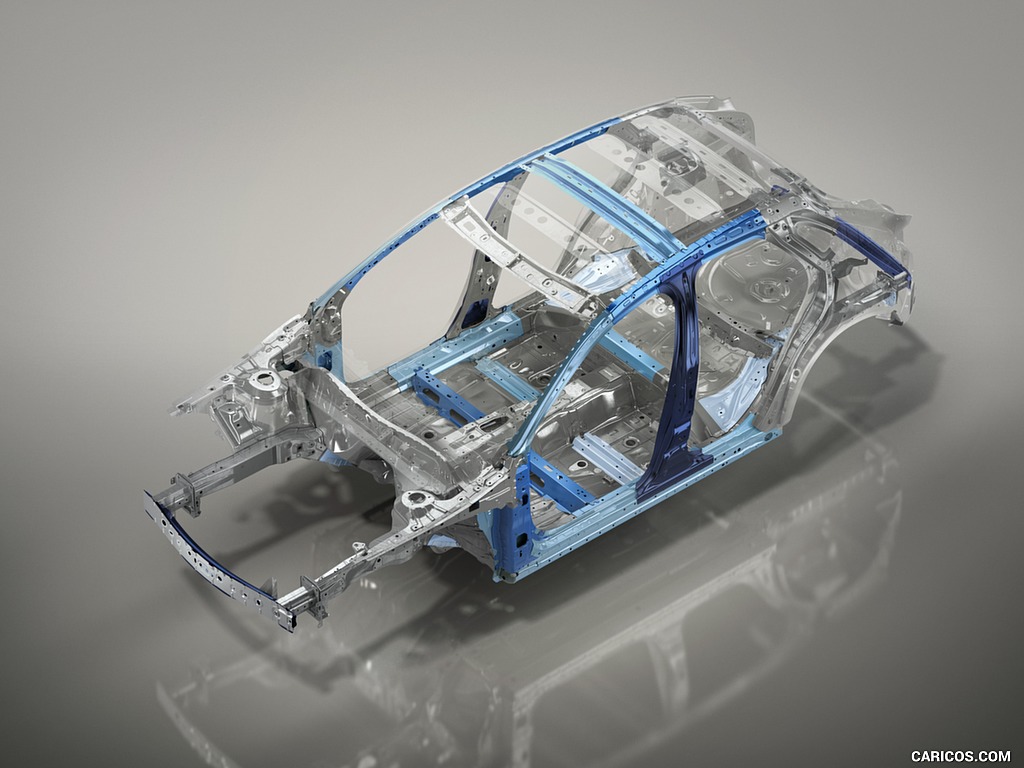 \n
\n
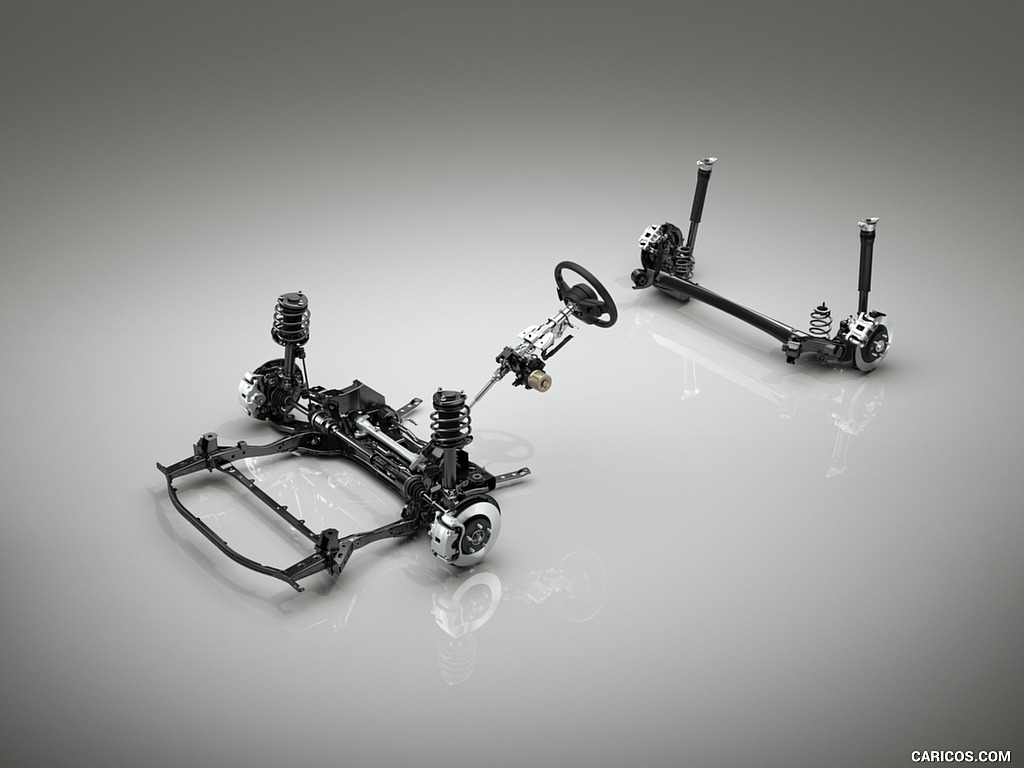 \n
\n





